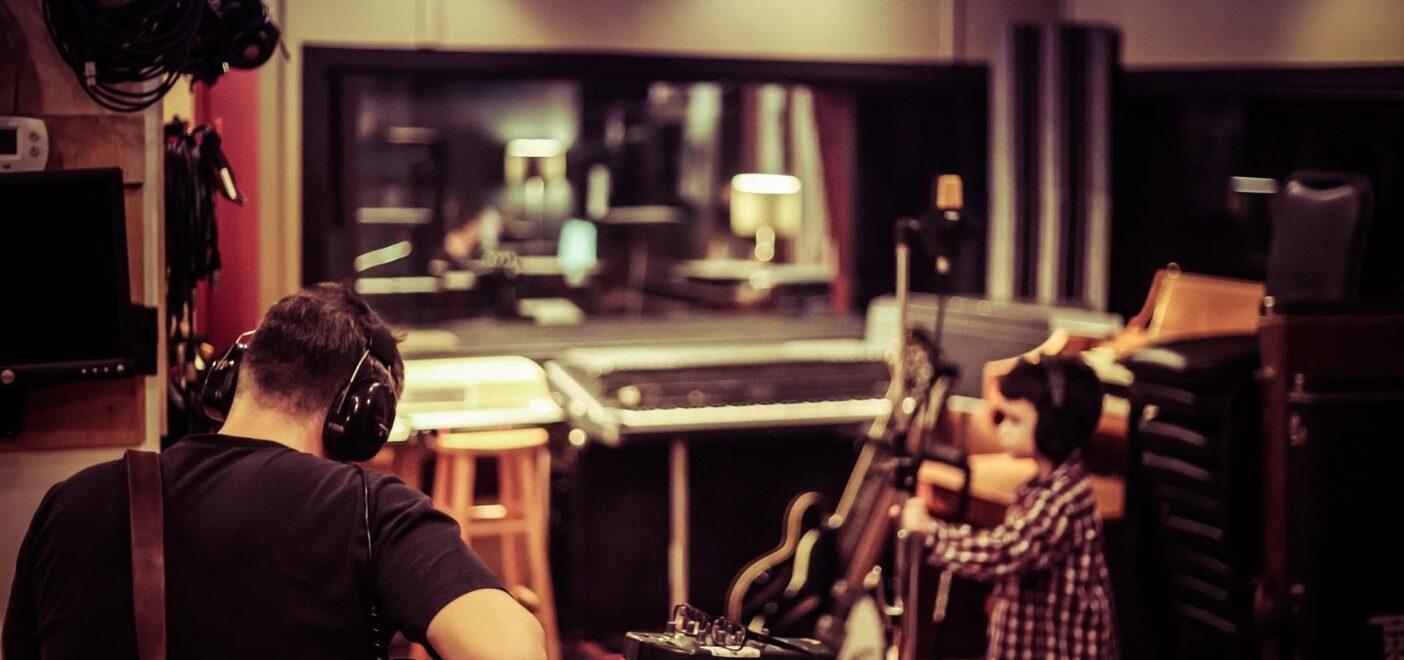Have you ever been intrigued by the idea of becoming a thriving electronic music producer? But you don’t know how to get started? Then this comprehensive guide about electronic music production is just right for you! However, before we delve into the seven electronic music production steps, let’s introduce you to what electronic music is.
Easy definition! The medium of music, composed via digital instruments and electronic devices, is termed Electronic Music. But beginners often get confused between the terms Electronic Music or the popular term Electronic Dance Music. Over the years, EDM has become the commonly minted term for Electronic Music. Therefore, nowadays, both terms are used interchangeably.
Getting Acquainted with 7 Steps to Electronic Music Production
Now that you know what Electronic Music implies, let me tell you that the production aspect might seem complicated, but it is relatively simple in reality. From setting up and choosing your DAW or developing the basics of music theory, such as understanding chords & melodies, to mixing and mastering the final product; Electronic Music production is all about experimentation and putting your learning to practice.
The 7 steps in this guide will let you know the secret of the right tools and techniques to ace the process of Electronic Music production.

Table of Contents
- 1. Gathering the Right Arsenal for Electronic Music Production!
- 2. Finding Your True Calling: Pick an EDM Genre
- 3. Develop the Foundation of Sound Design
- 4. Music Theory 101 for Electronic Music Production
- 5. Experiment with Your Resources to Build the Composition
- 6. Create an Impactful Composition
- 7. Mix Your Production for A Polished Look
- Conclusion: Enjoy the Process!
1. Gathering the Right Arsenal for Electronic Music Production!
Electronic Music production is as much about the right tools as it is about knowledge and musical concepts. Therefore, the various tools of electronic music are your arsenal. More importantly, to start producing your music, you do not need to invest too much. You will need a good computer, a DAW of your choice, and Headphones/speakers to get started. You may doubt the accuracy of such a simple production setup. However, electronic music is all about making the most of available resources to conjure the most powerful sounds and beats.
Let’s break down the essential equipment for Electronic Music Production.
Select the Right Device
It’s a given that the first step for an electronic music producer is to get a PC, Laptop, or Tablet. This gear is the brain of your production process. So, make sure that your device does not lag, crash, or heat up during editing or recording. As a beginner-level musician, we recommend using the PC/Laptop that you already own. Once you become more confident, you can then invest in a more sophisticated system.
The following attributes are a must for your device:
- Sufficient system storage and external memory.
- High-quality CPU system.
- Optimum graphic processing unit.
Find the DAW of Your Choice
A Digital Audio Workstation (DAW) is the primary equipment that you need for Electronic Music production. So, what is it? A DAW is basically a software program that lets you edit, record, and arrange music. In easier words, DAWs are the photoshop alternative for your music. The basic input source for your DAW is through two methods, i.e., audio files (sound samples) and MIDI sounds. It includes plugins and presets, external and built-in both to amp up your compositions.
Let’s take a look at some of the popular DAWs that you can opt for.
FL Studio 12
Martin Garrix & Avicii have made this DAW famous. This Windows OS-compatible DAW has a beginner-friendly interface and boosts smooth workflow.
Ableton Live
This DAW is the go-to choice for both professional and novice music producers. Big names like Deadmau5, Skrillex and Diplo, all use Ableton for their explosive sounds. The user-friendly interface and intuitive workflow of Ableton are what makes it so famous.
Logic Pro
This DAW is made for producing Electronic Music on your laptops. David Guetta & Calvin Harris are known to use Logic.
Before you decide to invest in a DAW, you must try the available trials for Ableton & FL Studio. Other than the widely used paid DAWs, some free DAWs, such as Podium & Tracktion 6, are perfect for beginner music producers.
Other Essential Pieces of Equipment
To produce electronic music, you need good quality headphones to hear what you are recording and making in the software. As a beginner, invest in headphones first and then opt for speakers if you want to. Headphones will let you listen to your sounds in a controlled environment.

You can also invest in a MIDI keyboard during the initial or later phases of your journey to improve your production process workflow. The MIDI keyboard adds ease to your production and editing process that lets you receive and send information.
2. Finding Your True Calling: Pick an EDM Genre
Now that you are set with your basic recording, it’s time to discover your sound and genre. Do not pressure yourself to develop a signature sound right from the start. Electronic music production is all about exploring and experimenting with different sounds. With time, effort, and skills, you will eventually find your true signature style.
Did you know that before Skrillex unleashed his brand of dark Dubstep, he was producing House music? Artists continue to evolve and grow with time. Therefore, you also have the liberty to explore your creative side. To do that, there are two ways. Let’s take a look at them both.
Find Your Inspiration!
For any music producer or artist, finding their source of inspiration is critical. Many musicians align their musical influences to figures from the past. This helps them explore their own sound. For instance, David Guetta lists Kings of Leon as his rock influence. So, developing a trained ear for Electronic Music Production is an essential part of the process. It will not only allow you to develop a musical perspective but would also help you in becoming a successful music producer.
Sounds & Genres that Entice You!
There are uncountable music genres and subgenres when it comes to electronic music production. It would be unrealistic for you to master and ace every genre. As a beginner, listen to different sounds and genres to discover what excites you. Is it House, Future Bass, Dubstep, Disco, Neo Soul, or Tech House that motivates you? Or is there any other genre that rocks your vibe?
Once you find a few styles that you like, look up their specific arrangement. There are many music production tips, but not necessarily strict rules. You should be aware of the basics. For instance, you cannot introduce an outro right after a verse. These little technical details are important to know.
3. Develop the Foundation of Sound Design
Things are getting heated now! Sound design is an essential part of electronic music production. It is basically all about combining different, samples, instruments, sound effects, and processing techniques to create a track.
Learn the Fundamental Elements
To quickly catch up with the basics of electronic music production, you must learn and practice side by side. The rule is to put everything you have learned into practice. Therefore, you should master your DAW. To do that, you might need to spend some time watching tutorials on YouTube.
Other than that, your composition’s sound design will depend on four elements: Synthesis, Recording, Sampling & Post-processing.
- Synthesis is all about creating and generating sounds. The audio synthesizer let you convert the electrical signals to sonic cues and can easily emulate any musical instrument from bass to guitar or flutes to the choir.
- A recording is essentially the process of storing acoustic sounds, such as vocals and textures.
- Sampling implies revamping the existing sound samples in a new way.
- Finally, sound processing is the final step where the sound goes through various effects such as reverb, phasing, and modulation. This step ensures that the sound you are producing is interesting and has depth to it.
Selecting the Plugins, Sample Libraries and Sound Packs
Electronic music production is easier for beginners with all the modern and technological support that we now have. Plugins, sound libraries, and presets are great tools. You might think, why do we need external resources such as plugins and presets when they come built-in with DAW? As you become more experienced with the production process, you will realize that possibilities are endless. Therefore, you will want to load free and paid plugins and sound packs in your DAWs to emulate all the sounds you want.
4. Music Theory 101 for Electronic Music Production
Knowing the basics of music theory for electronic music is not a pre-requisite, but it is definitely helpful. So, rather than spending time learning expansive music theory concepts, you should understand chords, melodies, and rhythms to compose a stunning track as a beginner.
The melody forms the main theme and ambiance of your composition, whereas the chord progression forms the harmony. Last but not least, the rhythm is all about the pace of the composition.
Now we know beginner-level producers find chord progressions extremely difficult. However, it is also true that these are the building blocks of your composition. The solution? Find easy EDM progressions on the internet and tweak them as you desire.
5. Experiment with Your Resources to Build the Composition
Electronic music production is about experimentation and pushing the boundaries. Once you get to know the different elements of music production, start the creative process.
Revamp!
Find a sound sample that you like and load it on your DAW to play with the sound. Apply the various effects and filters to observe how that sound changes and transforms. Consistent practice will build your confidence.

Deconstruct & Recreate!
One of the most efficient ways to learn Electronic music production is to learn from the other’s work. Find a song or a melody that you fancy and try to break it down to its simplest elements. This drill will help you identify different artists’ processes, allowing you to recreate the melodies independently and begin producing beats.
6. Create an Impactful Composition
Creating an impactful composition is all about combining the elements that you already know about. Let’s say you’re interested in creating a Trap track. Then the first step would be getting the vibe and energy of the composition right. To do that, you will need to sequence and the drums (or electronic drums), bass, and kicks properly. Once you have a solid arrangement that you like, you can tweak or edit the sound with filters, envelopes, and modulations. You can add reverb, delay, or other sound effects to alter the tune or as a technique for music transitions. You can then introduce as many or fewer elements and instruments as you want. However, make sure that the composition sounds clean instead of muddy or messy.
7. Mix Your Production for A Polished Look
The final step in the electronic music production process is making sure that the final track is properly mixed and mastered. Mastering is a post-production processing step that synchronizes your music across the board. It enables your music to play effortlessly on the radio and at festivals. This playback optimization includes using tools like equalizing, pitch levels, compression, loudness, and other parameters. The main goal of audio mixing and mastering is to make sure that the final result is cohesive.
Conclusion: Enjoy the Process!
Electronic music production is not as complex as most people think it is. The initial steps include getting the right resources and gathering the necessary knowledge for the kind of music you want to produce. The rest of the process is dependent on how much you learn and put into practice. Therefore, follow these 7 simple steps to start your journey as a beginner-level music producer. After that, the sky’s your limit.
Laisse un commentaire
Connecte-toi pour commenter.


